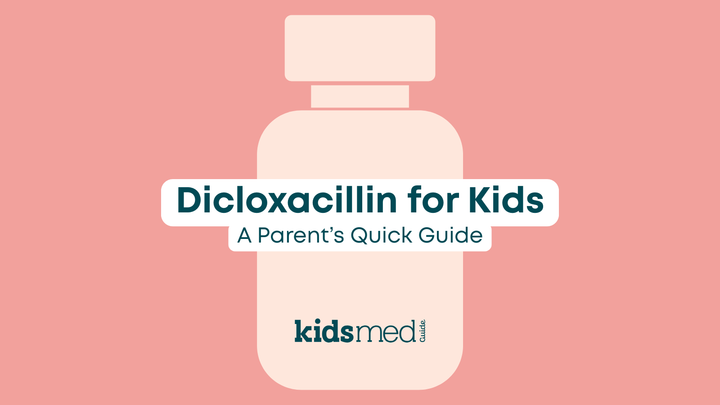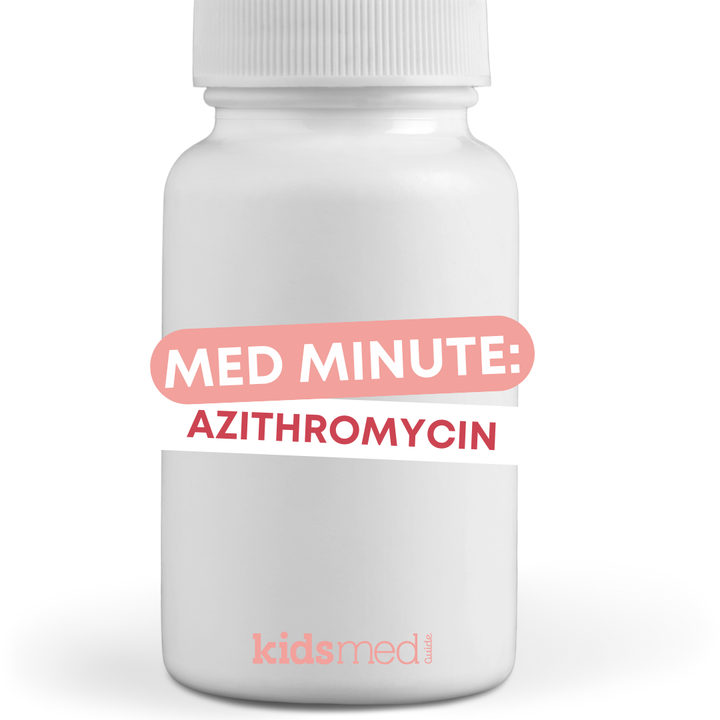Med Minute: Amoxicillin and Clavulanate (Augmentin)

This Med Minute guide covers amoxicillin-clavulanate, an antibiotic often prescribed for bacterial infections like ear infections, sinus infections, and pneumonia. Amoxicillin stops bacteria from growing, while clavulanate boosts its effectiveness against resistant bacteria.
Keep reading for quick facts on uses, dosing, side effects, and tips for giving it to your child!
What's it commonly used for?
- Treating bacterial infections: ear infections, sinus infections, pneumonia, skin infections, urinary tract infections
How does it work?
- Amoxicillin kills bacteria by preventing bacteria from building cell walls and preventing bacterial cells from replicating.
- Clavulanate inhibits bacterial enzymes that have adapted to inactivate amoxicillin, which allows amoxicillin to work against bacteria that would otherwise be resistant.
- Amoxicillin-clavulanate is a “time-dependent killer” that stops bacterial infections slowly, so therapy is often long, around 7-10 days.
What's the dose?
- Varies depending on weight and what you are treating
- Typical doses of amoxicillin component are around 45 mg/kg/day (standard) or 90 mg/kg/day (high), up to standard adult doses of 500-1000 mg per dose
- Usually given every 8 or 12 hours
- The ratio of amoxicillin to clavulanate can differ between products, and the correct formulation depends on the dose (standard or high)
What are the most common side effects?
- Diarrhea: the clavulanate in Augmentin can cause significant diarrhea
- Nausea, vomiting
- Diaper rash
- Rash (mild to severe)
How should my child take it?
- Take it with or without food; it’s recommended to take it with meals to reduce stomach upset
- Shake the suspension well and use the measuring device provided
- Store suspension in the refrigerator
The information in this guide does not include a comprehensive list of all possible side effects, contraindications, or warnings associated with drug use. This content is for educational and entertainment purposes only and aims to quickly provide caregivers with the most common counseling points for pediatric medications. It does not replace professional medical advice, nor does it supersede information found on a pharmacy label or drug package insert. Always read the complete package insert before administering medication to your child. Consult your healthcare provider for medical guidance, and call 911 in case of an emergency. Kids Med Guide is not liable for your interpretation or reliance on this material. You assume full responsibility for its use and any resulting decisions. For details, please see our Privacy Policy and Medical Content Policy.
The following references were used to compile this information:
DailyMed—AMOXICILLIN AND CLAVULANATE POTASSIUM powder, for suspension. (n.d.). Retrieved June 18, 2025, from https://www.dailymed.nlm.nih.gov/dailymed/drugInfo.cfm?setid=5200ae31-8a79-45f9-84fc-98f8448483a7



